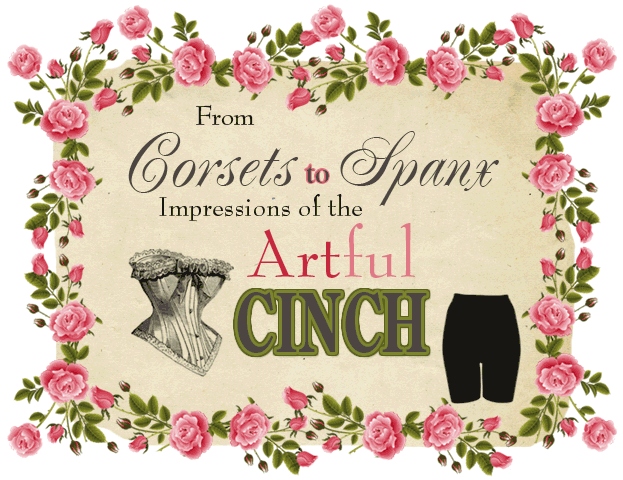 Last week I visited the Metropolitan Museum of Modern Art’s exhibit, “Impressionism, Fashion and Modernity”. The Met is the premier New York museum and I was curious to see my favorite Impressionist painters’ interpretations of the correlation between art and fashion from the 1860s through 1880s. The exhibit’s eight galleries contain more than paintings. Prints, gowns, men’s frocks and accoutrements such as hats, parasols, and corsets are also curated in the presentation.
Last week I visited the Metropolitan Museum of Modern Art’s exhibit, “Impressionism, Fashion and Modernity”. The Met is the premier New York museum and I was curious to see my favorite Impressionist painters’ interpretations of the correlation between art and fashion from the 1860s through 1880s. The exhibit’s eight galleries contain more than paintings. Prints, gowns, men’s frocks and accoutrements such as hats, parasols, and corsets are also curated in the presentation. 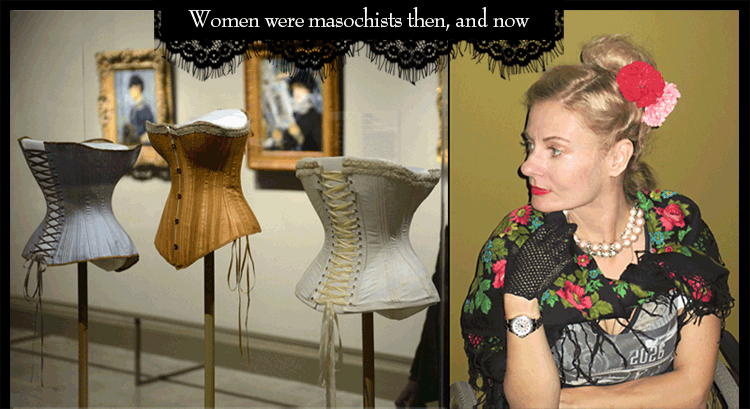
Parisian fashion from the 1860s inspired me to put my hair up in a bun fastened with carnations, vintage crocheted gloves, vintage floral shawl and a pearl ribbon rhinestone necklace by Subversive Jewelry.
During the hey day of Impressionism, Paris was the fashion capital and cultural epicenter of the world. Aristocracy spared no expense in seeking to be outfitted by fine couturiers such as Charles Frederic Worth, in silk faille, organza, jet fringe, and Chantilly lace. By the 1880s, the burgeoning new department store was established to entice the public with newly created must-have merchandise which had never existed before. This new fashion concept was directed toward the bourgeoisie and made au courrant styles accessible for the first time. Window shopping became a past-time and couples paraded down the boulevard to display their newest purchases. Petticoats were replaced by crinolines, oftentimes considered excessive due to high yardage and difficulty in maneuvering. Cashmere shawls imported from Persia and India were highly coveted and the height of chic.
As an avid student of the history of fashion, I followed the exhibit with an audio tour. I highly recommend this tour to gain insight and perspective into the historical influences on and inspirations of the French Impressionists.
What fascinates me most was the adherence to a strict and exhausting ritual of dressing, which involved layering one garment or accoutrement over another. While today’s designers occasionally reference corsets, lace, satin bows or flouncy embroidered hats in their designs, they update the design by streamlining the layers and intricate details. Long gone are the days when a woman pulled her corsets so tightly that she needed a fainting couch to resuscitate herself. Luckily, modern women opt for comfort and can choose Spanx® as their form of corsetry. I chuckle when I imagine the ladies of the Impressionist era setting eyes upon a track-set, pony-tailed baseball be-hatted, puffy vest clad, sneaker shod modern woman. Talk about needing smelling salts!
There are so many works I would love to review, but it’s not my goal to bore you with a college art history lecture. As an aspiring fashion art docent, here are a handful of highlights from my particular point of view.
Édouard Manet’s “Young Lady” 1866 – oil on canvas – Manet’s model, Victorine Meurend, poses in a pink peignoir fingering a man’s monocle while keeping the company of her grey pet parrot, her confidante. Victorine was a fashionable 1860s Parisienne–not courtesan– and Manet’s decision to paint a woman in a dressing gown subverted convention at that time. 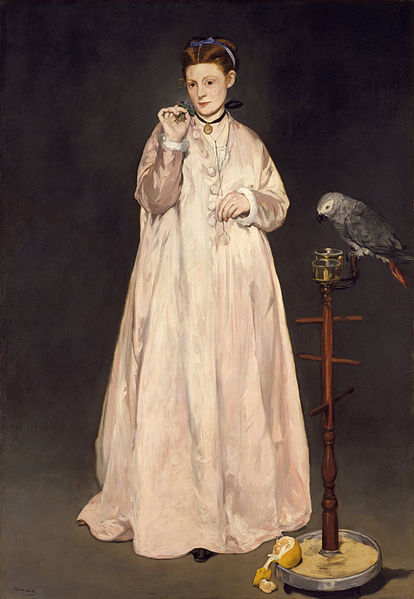 Could you imagine wearing something so beautiful around the house? Instead, I prefer my at-home attire to be minimalist in the way of a Champion sweatshirt with breakfast yolk stains, nappy sweats (as seen here) with thick mismatched socks.
Could you imagine wearing something so beautiful around the house? Instead, I prefer my at-home attire to be minimalist in the way of a Champion sweatshirt with breakfast yolk stains, nappy sweats (as seen here) with thick mismatched socks.
James Tissot’s “Portrait of Mademoiselle” 1864 – oil on canvas – In this piece, the model is not identified but wears a bright red Spanish inspired bolero, black taffeta dress and red headband. While this composition seems simple and pure in nature, the model’s slipper peeking out from under her gown suggests a different purpose-perhaps to seduce or disarm. Usually, I swoon over footwear, but in this instance, I could care less. BUT..consider that fantastic bolero! 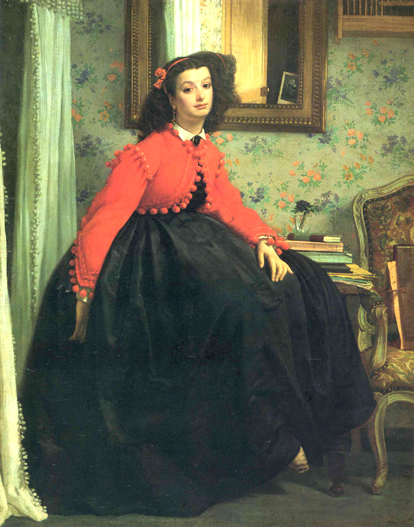 Recently I found this Altuzurra sweater which clearly references the Spanish bolero in a modern way.
Recently I found this Altuzurra sweater which clearly references the Spanish bolero in a modern way. 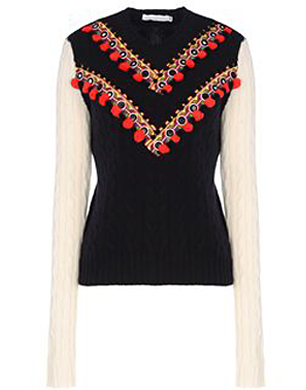 James Tissot – “The Marquis and Marquise de Miramon and their Children” 1865 – oil on canvas – 7’W x 5.75’H – Tissot’s placement of this aristocratic family in a nature setting was rare in the history of French portrait painting. It was more common in the English portrait set and clearly inspired Tissot. What really caught my eye was his exquisite attention to detail in the Marquise’s striped gown. The light, shadow and pin striping were so realistic and masterfully executed, that I could focus on little else. One more thing gave me pause. The Marquise, being a virtuous mother, is depicted in the painting with her baby wearing a coordinating blue sash. Virtuous mothers today, need not coordinate outfits with their children to show their outstanding maternal traits. Instead, today’s mom devotes a portion of her over-scheduled day to post on Facebook the supernatural feats of her gifted and special progeny.
James Tissot – “The Marquis and Marquise de Miramon and their Children” 1865 – oil on canvas – 7’W x 5.75’H – Tissot’s placement of this aristocratic family in a nature setting was rare in the history of French portrait painting. It was more common in the English portrait set and clearly inspired Tissot. What really caught my eye was his exquisite attention to detail in the Marquise’s striped gown. The light, shadow and pin striping were so realistic and masterfully executed, that I could focus on little else. One more thing gave me pause. The Marquise, being a virtuous mother, is depicted in the painting with her baby wearing a coordinating blue sash. Virtuous mothers today, need not coordinate outfits with their children to show their outstanding maternal traits. Instead, today’s mom devotes a portion of her over-scheduled day to post on Facebook the supernatural feats of her gifted and special progeny. 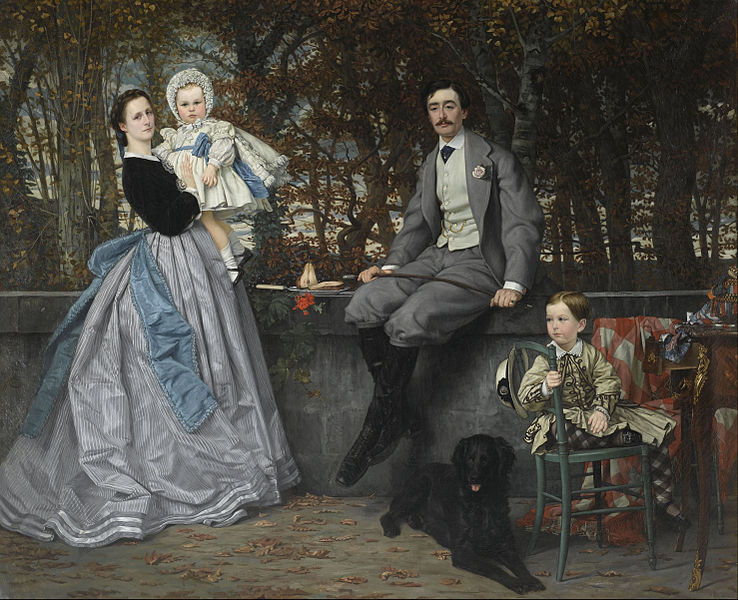 Gustave Courbet – “Young Ladies on the Banks of the Seine”1857 – oil on canas – Besides his choice of subject, Courbet recognized the power of fashion and dress to shock his audience. The model in the foreground exposes her undergarments and gazes at the viewer knowingly. These Parisiennes were not “ladies” but women of easy virtue. I find it amusing that this painting caused such a scandale because “they threw decorum to the wind”. Today, you would find this duo sunning themselves in New York’s Central Park. Bare butts exposed, tree-trunked legs spread, speaking loudly on their phones about last night’s sexual escapades which undoubtedly will be sold online. All this while awaiting word from their financial advisor on which tax haven is best to shelter their earnings. Cyprus or Grand Cayman?
Gustave Courbet – “Young Ladies on the Banks of the Seine”1857 – oil on canas – Besides his choice of subject, Courbet recognized the power of fashion and dress to shock his audience. The model in the foreground exposes her undergarments and gazes at the viewer knowingly. These Parisiennes were not “ladies” but women of easy virtue. I find it amusing that this painting caused such a scandale because “they threw decorum to the wind”. Today, you would find this duo sunning themselves in New York’s Central Park. Bare butts exposed, tree-trunked legs spread, speaking loudly on their phones about last night’s sexual escapades which undoubtedly will be sold online. All this while awaiting word from their financial advisor on which tax haven is best to shelter their earnings. Cyprus or Grand Cayman? 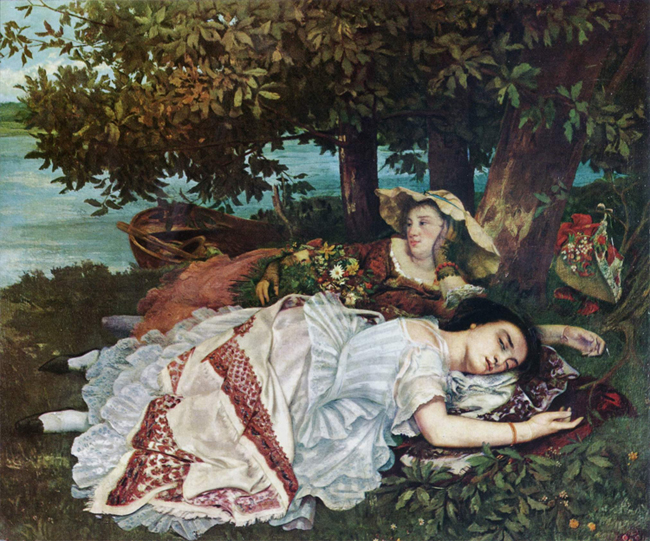 James Tissot – “The Shop Girl” 1885 – oil on canvas – 31.37 in × 25.62 in “We are the customers as the shop girl holds the door open.” As soon as I saw this painting I wanted to be a customer in this shop and be doted on by the black attired, impeccably coiffed shop girl. I wanted to sift through the pink and red satin pile of ribbon (to the left) and walk out carrying that perfectly wrapped and tied pink package the main subject is holding, as she courteously holds the door open.
James Tissot – “The Shop Girl” 1885 – oil on canvas – 31.37 in × 25.62 in “We are the customers as the shop girl holds the door open.” As soon as I saw this painting I wanted to be a customer in this shop and be doted on by the black attired, impeccably coiffed shop girl. I wanted to sift through the pink and red satin pile of ribbon (to the left) and walk out carrying that perfectly wrapped and tied pink package the main subject is holding, as she courteously holds the door open.
In modern day Paris, you might find an impeccably dressed shop girl working at the Chanel boutique on rue Cambon decked out in black, pursing her red matte lipstick, sporting a sleek asymmetric bob, dripping in costume jewelry, carefully folding garments in tissue paper, then sliding them into a sleek shiny shopping bag with emblazoned logo large enough to show the world you epitomize fashion and taste. 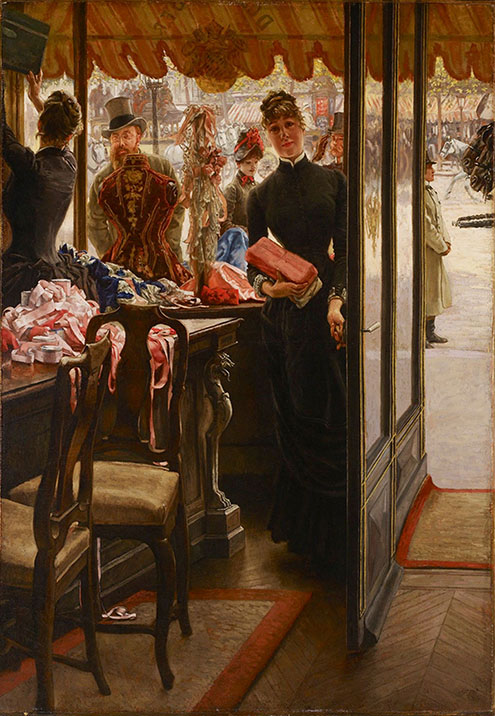 The exhibit is on display until May 27, 2013 and then travels to the Art Institute of Chicago from June 26-September 22. I highly recommend catching this exhibit wherever you can.
The exhibit is on display until May 27, 2013 and then travels to the Art Institute of Chicago from June 26-September 22. I highly recommend catching this exhibit wherever you can.
Don’t forget upon leaving NY to buy a hot pretzel the size of your head. I love empty salty calories. 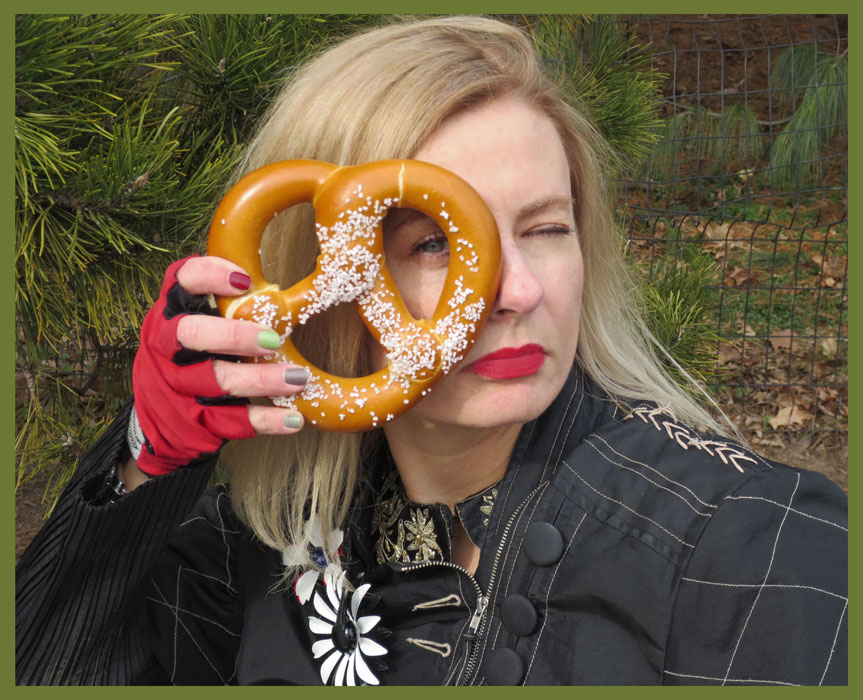 Images of paintings courtesy of Wikipedia.
Images of paintings courtesy of Wikipedia.

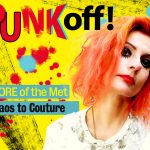






April 12, 2013 at 1:41 pm
What a wonderful post! I'm on the next plane to NY to see this exhibit!
April 9, 2013 at 10:26 am
Fabulous post! You exude passion for fashion from every pore. I love the red bolero jacket. These paintings also make me appreciate how important painters like Van Gogh–those who painted the lower classes–are to the history of art.
April 9, 2013 at 1:10 pm
Wish you lived closer Laura. You would love the show. It was so well curated. Definitely one of the better shows at the Met. I soooooo need that red bolero.
April 12, 2013 at 1:55 am
You're channeling Frida in that shawl/ red flowers in your hair, Miss Gorgeous. The art museums are at the top of my "Thing I Miss about New York" list.
April 8, 2013 at 10:29 pm
Superb! I needn't venture to the Met, usually filled to the gills. This is an AWESOME and inspiring post. I'm truly IMPRESSED!